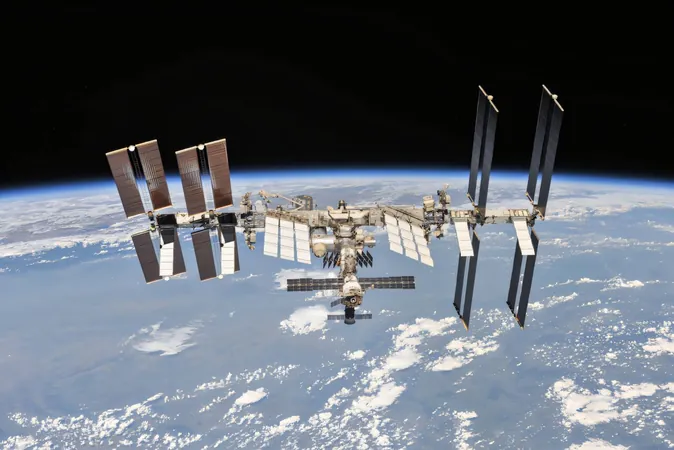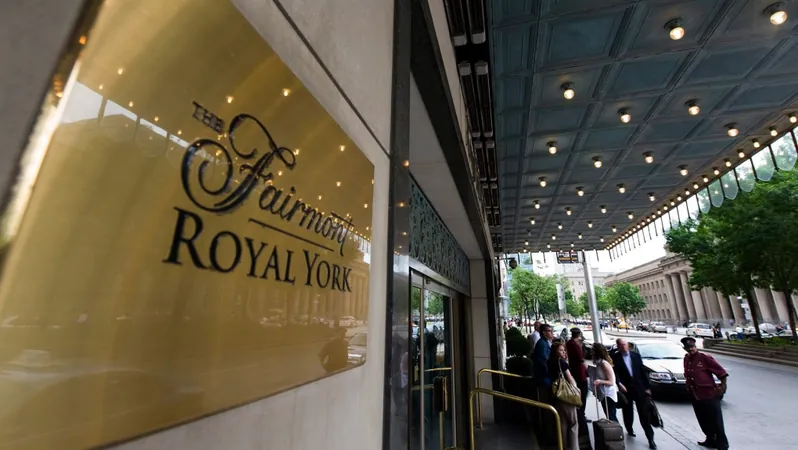
Revolutionary Space Materials Soar to ISS for Groundbreaking Tests!
2024-11-05
Author: Emma
On November 5, a new frontier in space technology was launched as innovative materials developed at the University of Bristol embarked on a journey to the International Space Station (ISS). These cutting-edge materials promise to be game changers for future spacecraft construction, including potential new space stations and vehicles for interplanetary travel.
The materials will be tested on the Bartolomeo platform attached to the ISS, where they are set to orbit Earth nearly 9,000 times over the course of 12 to 18 months, hurtling through space at an astonishing speed of 17,000 mph. Designed to endure the harsh conditions of low Earth orbit, these carbon fiber–reinforced composites will face extreme temperatures ranging from -150°C to +120°C, high-speed collisions with space debris, and the relentless assault of radiation and atomic oxygen.
“Designing materials for space is like entering a gladiatorial arena, pitting materials science against intense extremes,” said Professor Ian Hamerton, the leading researcher in polymers and sustainable composites at the Bristol Composites Institute. “There are no repair services available in space; our materials have to survive unaided.
The ISS test will feature an array of four specially engineered polymers, with two infused with nanoparticles for enhanced resilience. These groundbreaking materials are part of a patented initiative and represent a significant advancement in Bristol's research efforts. If they prove resilient under the harsh environment of space, they could revolutionize the durability of components used in future missions, enabling longer expeditions and more sustainable human habitats beyond Earth.
Dr. Ali Kandemir, a senior research associate also involved in this effort, emphasized the importance of these materials in protecting astronauts from cosmic radiation during deep-space travel. “Creating materials that not only resist damage but also shield humans from harmful radiation is crucial,” he explained. Importantly, the vision is to cultivate sustainable materials that can be recycled at the end of their lifecycle.
The launch of the SpaceX Dragon spacecraft, which carried these materials, is a significant milestone that represents five years of progressive research fueled by collaborations between Bristol's early-career researchers, postgraduates, and Aerospace Engineering undergraduates.
With critical support from the National Composites Center, the scale-up process for these materials was accomplished seamlessly. Prof. Kate Robson Brown from University College Dublin, a partner in this exciting project, remarked, "After years of attentive research and dedication, witnessing our materials launch is a thrilling moment. This not only signifies progress in space applications but also opens up invaluable career opportunities for young researchers and Ph.D. students in a rapidly growing industry."
As the quest to inhabit other planets intensifies, the successful testing of these next-generation materials could pave the way for safe and sustainable human expansion into the cosmos. Who knows? The very materials being tested today may protect future settlers exploring new worlds! Stay tuned as we follow this groundbreaking journey!









 Brasil (PT)
Brasil (PT)
 Canada (EN)
Canada (EN)
 Chile (ES)
Chile (ES)
 España (ES)
España (ES)
 France (FR)
France (FR)
 Hong Kong (EN)
Hong Kong (EN)
 Italia (IT)
Italia (IT)
 日本 (JA)
日本 (JA)
 Magyarország (HU)
Magyarország (HU)
 Norge (NO)
Norge (NO)
 Polska (PL)
Polska (PL)
 Schweiz (DE)
Schweiz (DE)
 Singapore (EN)
Singapore (EN)
 Sverige (SV)
Sverige (SV)
 Suomi (FI)
Suomi (FI)
 Türkiye (TR)
Türkiye (TR)